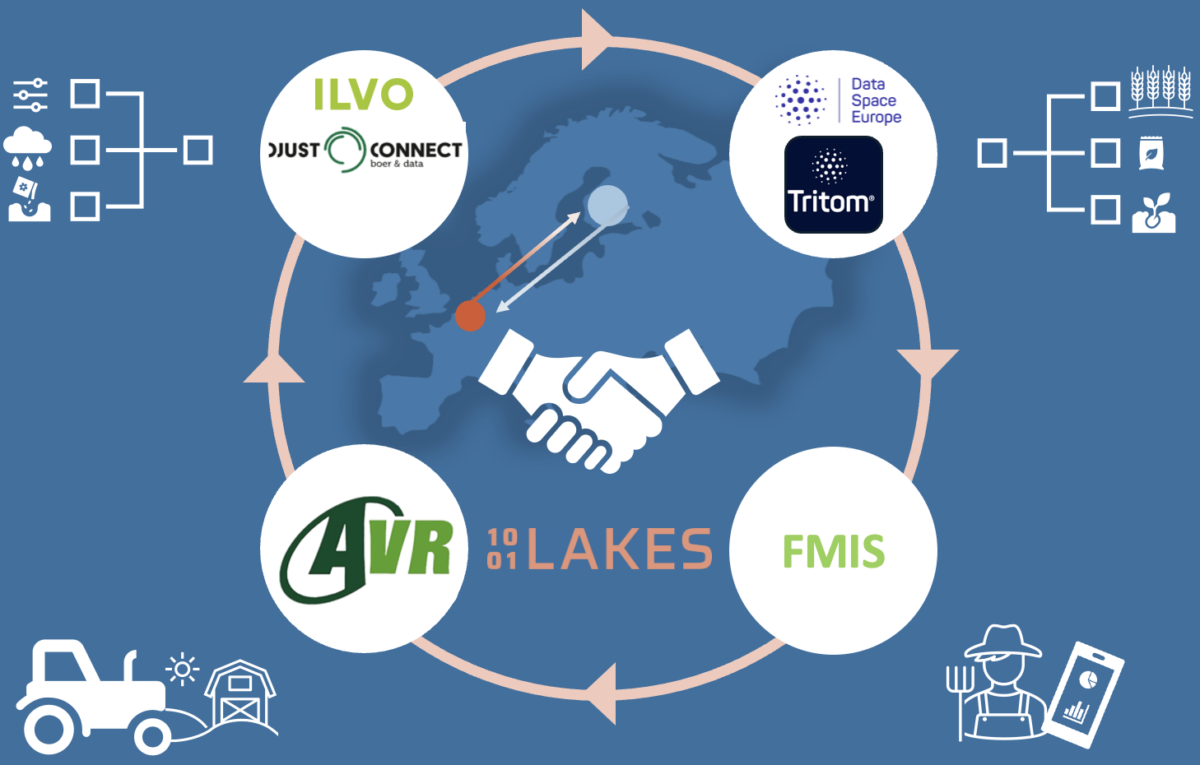The series explores real use cases that demonstrate how networked data usage and sharing have resulted in concrete value.
This entry explains how we enable data-driven precision farming that results in a 4-6% increase in annual harvest yield and consequently, a 2000€ increase in annual profit for an individual farmer. On a Europe-wide scale, this adds up to 2 billion euros in additional profit for the European agriculture.
In the early days of 1001 Lakes, we took guesses at which industries would be the first to embrace networked data usage. We must admit that while agriculture was on no one’s list, today it is one of the most advanced verticals when it comes to data networks.
Setting the scene
A Finnish potato farmer is using farming machinery by the Belgian manufacturer AVR. Modern equipment produces loads of data (harvest yield, fuel consumption, you name it), which is stored on AVR servers and made available on the AVR Connect platform. The farmer is already using a Farm Management Information System (FMIS) for farm analytics and management. They understand the value of the machinery data, but the threshold to take another, separate system into use is high for them. Couldn’t there be a way for the FMIS, which the farmer is already using, to get the AVR data and provide analytics on it to the farmer?
There are several challenges in making this happen. The two most significant ones are
- Interoperability: overcoming technical obstacles in transferring data across borders between two completely separate systems
- Farmer control: the farmer holds the rights to the data generated by their equipment on their farm. How do we ensure that the farmer has complete control over where their data is being shipped to?
Coordinated and supported by the Finnish innovation fund Sitra, a consortium consisting of 1001 Lakes, AVR, Klåvus Group, along with the Finnish and Belgian data intermediary service providers Dataspace Europe and ILVO, was formed to tackle these challenges. The project was named “Potato-X”, which is probably the coolest name you can come up with.
The solution
Data sharing between the parties requires trust. From this perspective, 1001 Lakes collaboratively drafted the Potato-X rulebook, an agreement establishing the common framework used to govern the new network with the potential to expand the current use case. All parties believe that farmer participation is vital to the future of the data sharing, and a central pivot of the rulebook became farmer permissioning, meaning that all data sharing considering data created by the farmer will be subjected to a consent proceeding fully controlled by the farmer.
AVR was already a client of DjustConnect, the Belgian data intermediary service by ILVO. To distribute the data on the Finnish side, and providing the farmer with the necessary control, we needed to connect Tritom (the Finnish data intermediary by Dataspace Europe) and DjustConnect.

From the interoperability perspective, the concrete solution is a piece of software we call the “Bridge”. It takes care of translating requests and controlling the data transfer from DjustConnect to Tritom.
Tritom, on the other hand, sets up a pipeline between the Bridge and the FMIS and publishes it as a service product. The farmer can now take this service product into use, by which they consent to their data being transferred from AVR to the FMIS.
Why?
Quality harvest yield data enables the farmer to focus on high-yield areas. This is known as precision farming, and studies show that it increases annual yield by 4-6%. For an average farm, that translates into roughly 2000€ annual profit increase. That may not sound huge, but for an individual farmer it may well be significant. Furthermore, we estimate that in all of Europe, there are around 1 million farms that could benefit from this kind of data-driven precision farming. That would add up to a 2 billion € annual profit increase for the European farmers, while providing them with complete control of their data. For the equipment manufacturer, this opens up completely new business opportunities based on distributing the data generated by their machinery. Talk about agricultural revolution.
 Emeline Banzuzi,
Emeline Banzuzi,  Joel Himanen,
Joel Himanen,